Mr. Simons, would you consider yourself someone that lives and breathes fashion?
How can I put this without being too critical? I don’t have so many things in the fashion world that interest me. It’s probably because I am so deeply into it. Often when you go very deep into something, you also discover what it’s about and you understand it better. With the art world I still have a lot of curiosity. There are a lot of things that I feel attracted to and I don’t necessarily understand them and that’s what fascinates me. In the fashion world I know a lot of the brands and the designers and you start to be more critical and you start to have a very specific point of view.
But isn’t fashion such a significant part of your life?
The fashion thing is something I do, and yes it is definitely also becoming a part of myself and my personality. It also doesn’t really feel like a job either: it’s a dream or a passion or something. I think there are things that I relate to more than fashion though, personal, private things. Like my environment, my family, my friends, you know.
I’ve read that the first fashion show you ever went to was Maison Martin Margiela. You said it was so beautiful that half the audience cried and it had a huge influence on you. Why?
Because that was the day that I understood that fashion could also be conceptual and intellectual, that it could be linked to a certain kind of social, psychological thing. That Martin Margiela show was in a really trashy area in Paris and it wasn’t in a building, it was in a playground from a black neighborhood. The parents had agreed to do the show for the Margiela company only if their children could come and see it. Everybody was expecting the children to just stay on the side and sit with the audience, but they didn’t.
What happened?
They started to play with the girls and it was a very, very different thing. Before my perception of fashion was a high-staged Americano, you know like sun tans, boys, healthy. Martin was turning it completely around; it was like they came out of a grave or something. They looked really different. I don’t have that background; my parents are very working-class and I come from a village where there is no culture.
How did you find your creativity in such a place?
One of the first things I picked up when I was very, very young out of a record store was work from Peter Saville, the early things he used to do for Factory Records. I come from a village of 6,000 people, so forget about Berlin, London, New York – what are you talking about? – I didn’t know anything. So I picked up things because of the imagery. We have to think back in time – no computers, no mobiles, no nothing – it was pure isolation in a way.
You never traveled when you were younger?
No traveling, never went on a holiday. My life was literally my street. And I picked up records because when you’re young, you’re into the bands. And what were the bands back in the day? The Cure, Anne Clark, and all the new wave things. And then suddenly there were these things from New Order, Power, Corruption, and Lies with the flowers and the wreath. I was like, “What is that?”
Is that how you became interested in fashion?
No. I was in a college, you know, with priests teaching. We were not informed about what was possible. Until I was eighteen I did not know that you could study fashion design or art. I really didn’t know. I already had my nose in the art world, I was already looking at things, but I didn’t really get it that you could study that because my school was a very different environment. It was the kind of school where they want you to become a doctor or a lawyer and that’s not at all what my personality is.
How did you manage to get out of that?
I got this book from these people who would come to the class once or twice a year to show you what the possibilities to go and study are. In the back of the book there was a half page on architecture and a half page on industrial design. I looked at the address of the industrial design school and it wasn’t too far from my parents’ house – I could get there with a bus – so I thought I’d go and have a look. I walked through the door and I thought, “This is what I’m going to do.” I saw all these kids sitting there, with cigarettes, it looked like such a different world.
But that was industrial design, how did you end up in fashion?
Within the first months at that school I realized everything that was possible – going to an art school, going to a fashion school – and it was in that period that the Belgian designers started to shape up and I was very attracted to that. There was a Belgian fashion designer named Walter Van Beirendonck and I saw that the way he was handling fashion was not just by making clothes, he was also doing presentations and masks and furniture. I was so modest to think that I wouldn’t be welcomed in fashion because I was in design school, but I thought maybe I should just write a letter to see if he had an interest in letting me work for them and that worked out. He’s actually the one who took me to Paris to that Martin Margiela show we were talking about earlier.
It’s interesting because it feels like this combination of different but related art fields was always very present in your career and in your interests.
Yeah.
How do you deal with your star status in the fashion industry?
It’s not that much in my interest. It’s actually something that I’ve found quite complicated for a while. I’ve always kind of tried to split it up, but that is becoming more and more difficult because I’m attracted to do things that have this constant dialogue with an audience and it seems to keep growing. Which is a good feeling because that means that people want to have that dialogue with me or the things I do. So it is kind of fascinating, but the idea of fame just for fame’s sake is something that I actually hate.
How important is the Internet in that dialogue with your audience?
That’s the question that is in my head a lot lately. I don’t really know about the long run. It’s clearly quite important right now – it’s so much a tool from this moment and from this generation – but what were the tools when I was young? The tools were television and magazines or a normal telephone in the house and now twenty years later those are all gone. So I’m just trying to imagine if this computer thing and the Internet thing might be gone in twenty years. It’s an important tool in this moment, but I’m still somebody who believes that a real-life experience makes a difference. I know a lot of young kids whose world is literally their sixteen square meter room and their computer. With all respect, and yes I embrace the young generation’s approach, but you miss a lot that way.
An actual encounter with an art piece or a fashion show is significantly different than seeing it on a screen.
Exactly. The dimensions, the light, everything is different. Looking at and experiencing a movie in a theater or a performance on stage and being there and feeling the vibe and also feeling the other people’s vibes – it’s a very different thing. It’s one hundred percent the opposite of what we embrace so much as the new communication. But it’s important because it’s what the young kids embrace very, very much. Still, I think if it was only that, it could mean that it will disappear really fast. At the end of the day we are animals; it’s very animalistic in a way. We like to have contact.
Talking about the new generation, you used to teach fashion in Vienna. Do you think it’s possible to teach someone to do what you do?
That’s a good question. I think it partly can’t be taught, because I think teaching is not just learning to make a pattern or learning to sew a skirt or whatever. Teaching is also having a dialogue with somebody in order to teach the person to create a thought process. I do find a lot of people who have an interesting, individual, unique, meaningful thought process, but then comes the moment that the thought process, which is very abstract, has to be translated or brought to an actual thing, to a materialization. That’s where a lot of them have difficulties.
What is your thought process like? Let’s imagine you’re stuck with an idea and you don’t know where to go with your designs for a new collection…
Then I stop fashion, that’s not possible. That’s the day that I die!
But I’m sure you get stuck every now and then.
No, for me it’s the opposite. I have to find ways to stop the thought process because the thought process is constant; it’s constantly everywhere. And that’s not to make me sound pretentious, because it sometimes makes me unhappy. It can keep you awake or you have it in the middle of a meeting.
Does that affect the people around you?
It sometimes makes people nervous. I’m doing things and at the same time thinking about something else and they are responsible for working things out from the thing that I said before and I’m already saying something else. They would say, “Calm down! First this.” It’s a flow. I’m not somebody who has to sit at a desk and think over what I have to do. I know for myself that the day I’m stuck for an idea is the day that it has to stop; that’s the day that I know it’s not going to work anymore. So for me it’s the opposite: I have to find ways to stop my creative thought process.
What are some of those ways?
I go to the art world and I look at all the people’s work and I’m so fascinated with the work because it takes me away from my fashion thing. That’s also probably why I keep doing several things all the time – because the thought process never stops.
Return to Top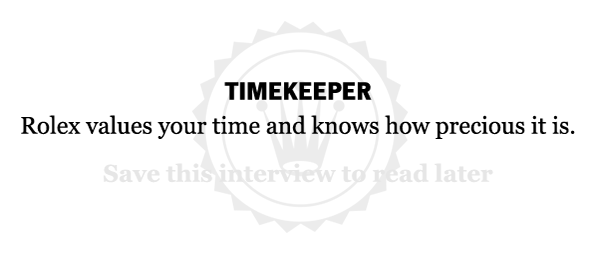
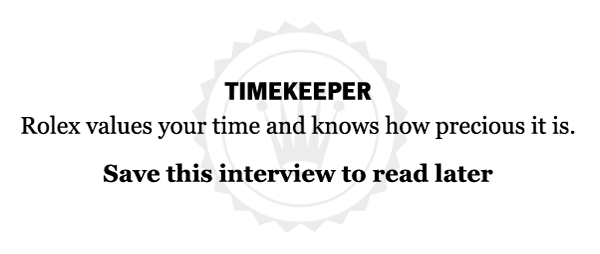
Short Profile
Name: Raf Simons
DOB: 12 January 1968
Place of Birth: Neerpelt, Limburg, Belgium
Occupation: Fashion Designer
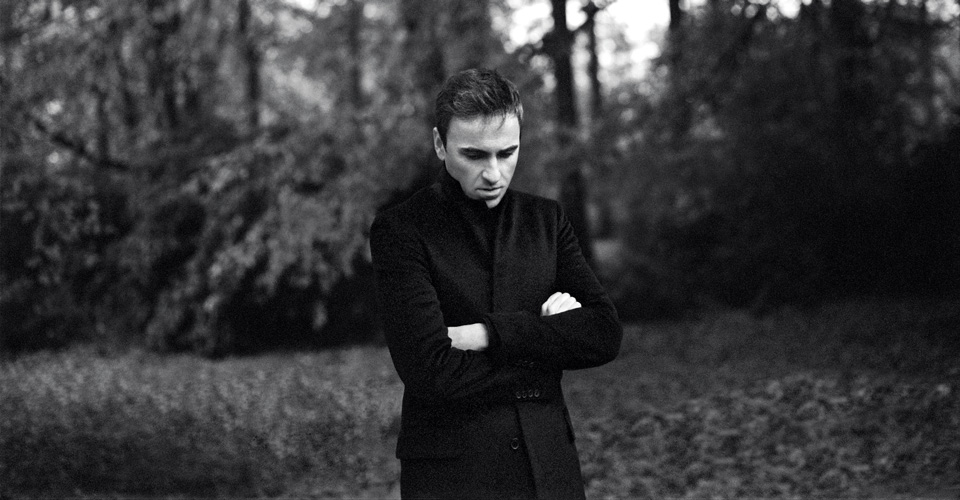
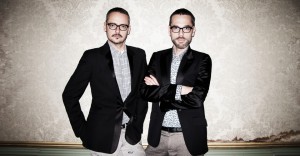
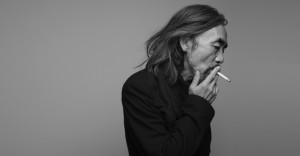
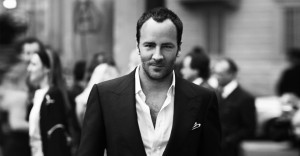

















Love the comment about the Martin Margiela shows. Honestly I think today MMM is transforming into something more extravagant, unlike back in the old days.
I also love how blinded he implied he was back then, and I can imagine his deep fascination of the art world he thought would never existed. I would love to have that kind of fascination
Hi, Do you know which MMM show he’s speaking about? Is there a video on the web about it?
Hi Mark,
It was one of his very first shows – there is a brief section of it in the recent “the artist is absent” short docu about his work, near the start, just google it if you have not watched it already. Beautiful grainy and dated footage. If you want to see more of his work from around then I recommend buying the curated “street special edition” magazine, im sure its still on amazon if you look that up too.
Hope this helps!
Patrick.
Lov work of Raf and his possibilities in menswear his crativety .. tecno fabris.beautiful leather belgian shoes . impecable tayloring, his rearshing in art result lovely prints..and music normally tecno industrial.. is really my stile .. but llike creative as well .. I suffer with the same process when stuck for new idea comsumer you while you devoloping something else in the same way..hard”
Im up its about 1:24 am. Fashion anyone? Im so glad that I found this article, you gave me so much of what i never had…i feel as though i was talking with you on my block, wait im supposed to be commenting on the article. But anyway..Thankyou.
Very good interview
Love the ideas of Simons about communication nowadays (the Internet thing, etc..), and his definition of what is teaching
Thanks for sharing
ana